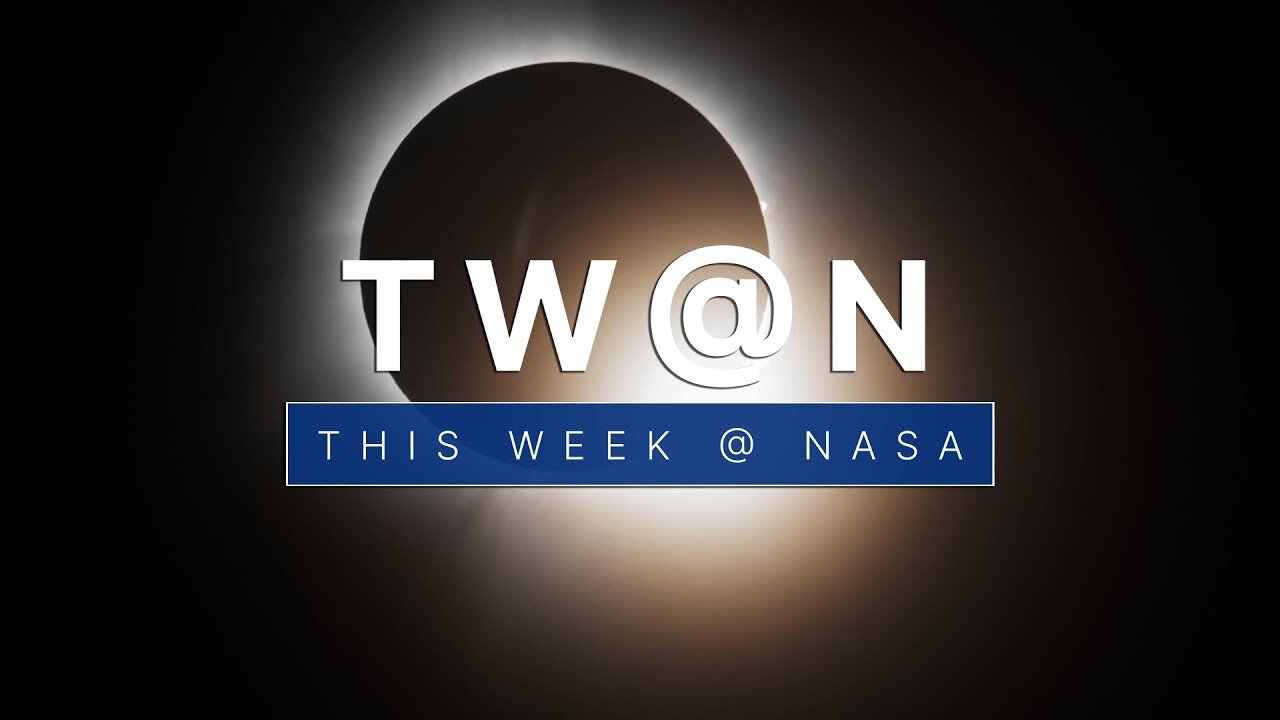Premium Only Content

Following the Shadow of the Total Solar Eclipse
Following the shadow of the total solar eclipse, a NASA astronaut returns safely from the space station, and our lunar-roving robot gets some new hardware … a few of the stories to tell you about – This Week at NASA!
Video Producer: Andre Valentine
Video Editor: Andre Valentine
Narrator: Emanuel Cooper
Music: Universal Production Music
0:00
Following the shadow of the total solar eclipse.
0:04
A NASA astronaut returns safely from the space station.
0:08
And our lunar-roving robot gets some new hardware.
0:11
A few of the stories to tell you about – This Week at NASA!
The Shadow of the Total Solar Eclipse
0:16
We provided extensive coverage of the April 8 total solar eclipse from various
0:20
locations across North America as the Moon’s shadow traveled from Mexico, across
0:25
the U.S. from Texas to Maine, and through parts of Canada.
0:29
In addition to views from the ground, views of Earth from a NASA science
0:33
aircraft, and even from the International Space Station showed the Moon’s shadow
0:38
passing over cities and towns situated along the path of totality.
0:42
A total solar eclipse happens when the Moon passes between the Sun and Earth,
0:46
completely blocking the face of the Sun.
Laurel OHara returns to Earth
0:49
On April 5, NASA astronaut Loral O’Hara and two crewmates boarded a Soyuz
0:54
spacecraft and undocked from the International Space Station.
0:59
The next day, the trio made a safe, parachute-assisted landing in Kazakhstan.
1:04
O’Hara spent six-months aboard the station supporting NASA’s Artemis campaign
1:09
and working on various scientific activities.
1:12
This was her first spaceflight.
Lunar roving Viper robot installed
1:16
The team building our lunar-roving VIPER robot recently installed its mast.
1:21
Rover drivers and researchers will use the suite of instruments affixed to the mast,
1:26
along with several science payloads, to scout the South Pole region of the Moon
1:30
during the rover’s upcoming mission. VIPER seeks to help us better understand
1:35
the origin of water and other resources in that region prior to sending astronauts to
1:40
the Moon as part of our Artemis campaign.
DC8 aircraft retired
1:43
NASA’s DC-8 aircraft was welcomed back to the agency’s Armstrong Flight Research
1:48
Center recently after completing its final mission. As the largest flying science
1:53
laboratory in the world, the DC-8 has been used to support the agency’s Airborne
1:58
Science missions since 1987. It has helped collect data for countless scientific
2:04
projects conducted by the global scientific community. The DC-8 will be
2:09
retired to Idaho State University,
2:12
where it will be used to train future aircraft technicians.
2:17
That’s what’s up this week @NASA!
2:19
For more about what else we’re up to, check out nasa.gov.
-
 LIVE
LIVE
Matt Kohrs
9 hours agoMarkets Rocket Higher, Breaking News & Payday Friday || The MK Show
1,712 watching -
 LIVE
LIVE
BonginoReport
2 hours agoTrump Releases JFK Files: “Everything Will Be Revealed” (Ep.125) - 01/24/2025
13,055 watching -
 LIVE
LIVE
Jeff Ahern
1 hour agoFriday Freak Out with Jeff Ahern (6am Pacific)
566 watching -
 LIVE
LIVE
Game On!
12 hours agoNFL MVP Finalist announced and Patrick Mahomes got SNUBBED!
1,043 watching -
 1:22:03
1:22:03
The Criminal Connection Podcast
1 day ago $3.06 earnedEddie 'THE BEAST' Hall: Tanks, Fighting, Films & Not Getting Arrested with the Worlds Strongest Man!
21.7K5 -
 11:36
11:36
MrBigKid
17 hours ago $6.47 earnedGoing Thermal... AGM Rattler TS25 Thermal Imaging Scope
74.9K6 -
 1:47
1:47
Kyle Fortch
14 hours ago $4.97 earnedTHE ONE SHEET: Season 1 Trailer
46.7K1 -
 15:12
15:12
Clownfish TV
19 hours agoVideo Games WILL Drop DEI, Too. Just Wait.
16.7K9 -
 15:17
15:17
Melonie Mac
21 hours agoFemale "Pastor" Lectures Trump with Abomination Sermon
23.5K58 -
 11:56
11:56
IsaacButterfield
1 day ago $1.44 earnedYou're Racist If You Don't Marry Your Cousin
19.3K9